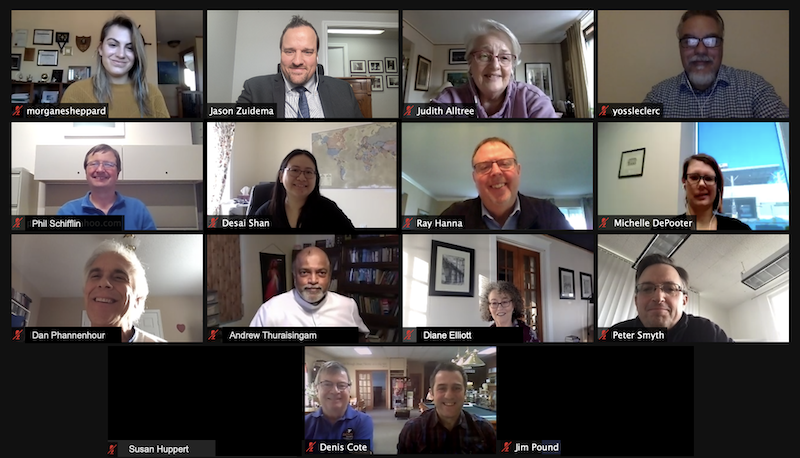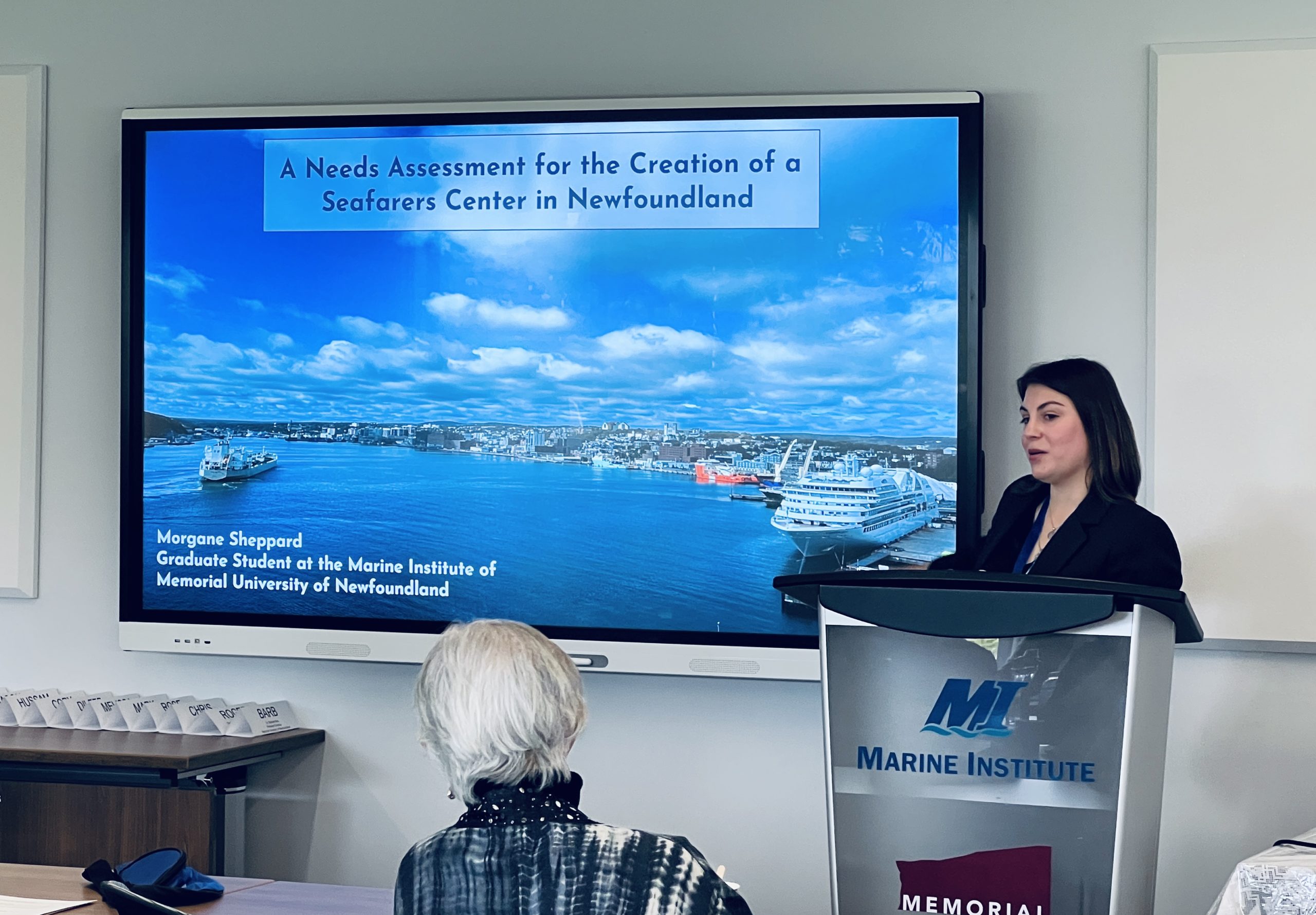by Susan Huppert, NAMMA
A collection of port chaplains and seafarers’ ministry partners from across Canada met for a round table discussion via Zoom on Feb. 8 to assess the ongoing outreach to international seafarers. Facilitated by Executive Director Dr. Jason Zuidema of the North American Maritime Ministry Association, the cross-section of mission leaders evaluated their work in the midst of COVID-19.
Reverend Peter Smyth, Mission to Seafarers in the Port of Vancouver, B.C. noted that beside the practical services, a noticeable difference in the seafarers exists.
“The seafarers are needier,” said Smyth.
Particularly among those who return every 40 days, he has seen additional stress, challenges with shore leave and Wi-Fi access. Only about 15% are coming ashore at Roberts Bank, which captains may feel is safer because it is a contained area. There, seafarers can access 24-hour Wi-Fi.
A great benefit is the newly formed Vancouver Port Welfare Committee comprised of pilots, agents, port representatives, the harbour master, the ITF and representatives of local seafarers’ ministries. A Port Welfare Committee gains insight from the local seafarers’ ministries to extend support for seafarers in practical ways. The Vancouver Port supplies Wi-Fi units for seafarers on board as centres have reduced hours.
According to Vancouver Lighthouse Harbour Ministries Sr. Port Chaplain Ray Hanna, understanding the controlled shore leave policy still seems to be a weak link with the agents. Chaplains have directed agents and seafarers to the Transport Canada bulletins, but some fail to listen. Awareness and response seems inconsistent. He noted that, in his experience, the Canadian Border Service Agency (CBSA) representatives were not always aware of Transport Canada’s Control Shore Leave policy. Lighthouse Harbour Ministry transports only to its centre and back to the ships at this time, but remains open to review its policies as things change. The need among seafarers is still great.
The International Sailors’ Society of Canada has been supporting seafarer centres across Canada for more than 100 years. Yoss Leclerc, representing the ISSC, said that they received financial requests from various seafarer centres in the past year and were happy to support. Zuidema extended thanks on behalf of the Canadian centres to the ISSC for this support.
The Mission to Seafarers in the Port of Hamilton, Ontario was represented by Chaplain Dan Phannenhour. The seaway is currently closed due to seasonal weather. However, he reported that challenges with shore leave have existed before the closure.
“Some agents were saying no shore leave at all, while other ships allowed them to take shore leave as much as they wanted,” he said. “Seafarers have wanted to meet with family and friends. We recommended against this because it was against government rules.”
Overwhelming shopping expectations was a common challenge among multiple centers. Phannenhour reported that between mid-November and Christmas every ship wanted a very, very high volume of shopping.” Phannenhour stated that the Hamilton Mission had helped purchase over $80,000CAD in personal requests for seafarers since the beginning of the pandemic.
Often the requests are beyond what can be provided. In Montreal, Chaplain Michelle DePooter says her personal living room has converted into a receiving and delivery post for seafarer’s requests. Purchasing, tracking, sorting and labeling packages are “things they never taught in seminary.”
Fr. Andrew Thuraisingam shared that Stella Maris chaplains in Canada had very similar experiences to others. Thuraisingam serves as the regional director for Stella Maris in Canada.
Denis Côté, serving the Saguenay International Seafarers’ Ministry concedes that the current pandemic has been challenging for seafarers. He shared stories of his work for seafarers in these difficult times. He was encouraged to be joined on this call by his newest staff member, Jean-Doris Fortin.
Reverend Judith Alltree reported on ports in Toronto and Oshawa in the Southern Ontario region where shopping for seafarers was extremely busy. She plans to create a best practice for meeting the shopping needs of seafarers in an effective way. On a positive note, the centers gave 600 ditty bags between Dec. 6 to 24 due to assistance by incredible ditty bag Christmas donations.
Focusing on the personal aspect of ministry, Alltree addressed the welfare of the seafarers.
“There is a need about the seafarers this year. They ask us to come back daily as they are so hungry for human contact. They are so concerned about what is going on and there is a reassurance when we are there,” she said.
As Canada’s Mission to Seafarers Regional Director, Alltree commends her ministry partners from all denominations for sharing their experiences over the past year.
“We have all benefitted from our shared experience, she said. “From coast-to-coast and across the Great Lakes, working together with you all has been a huge blessing.”





